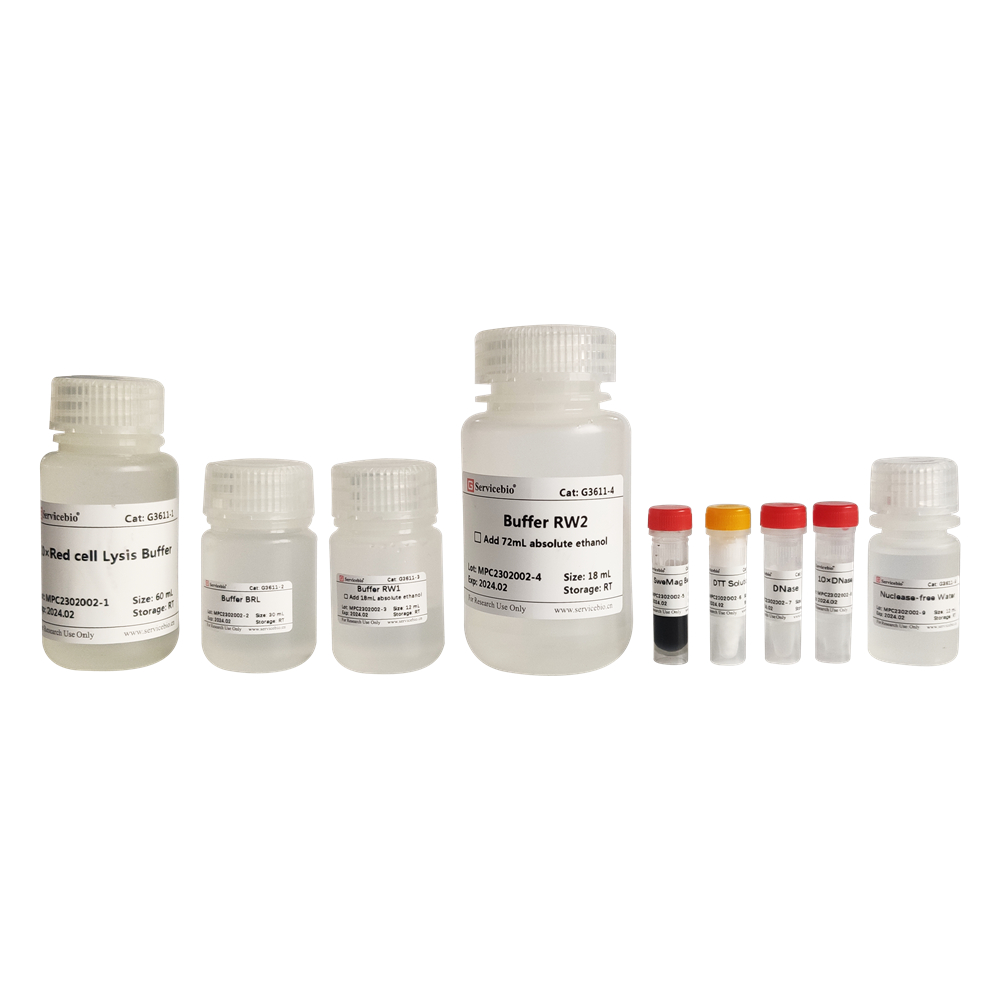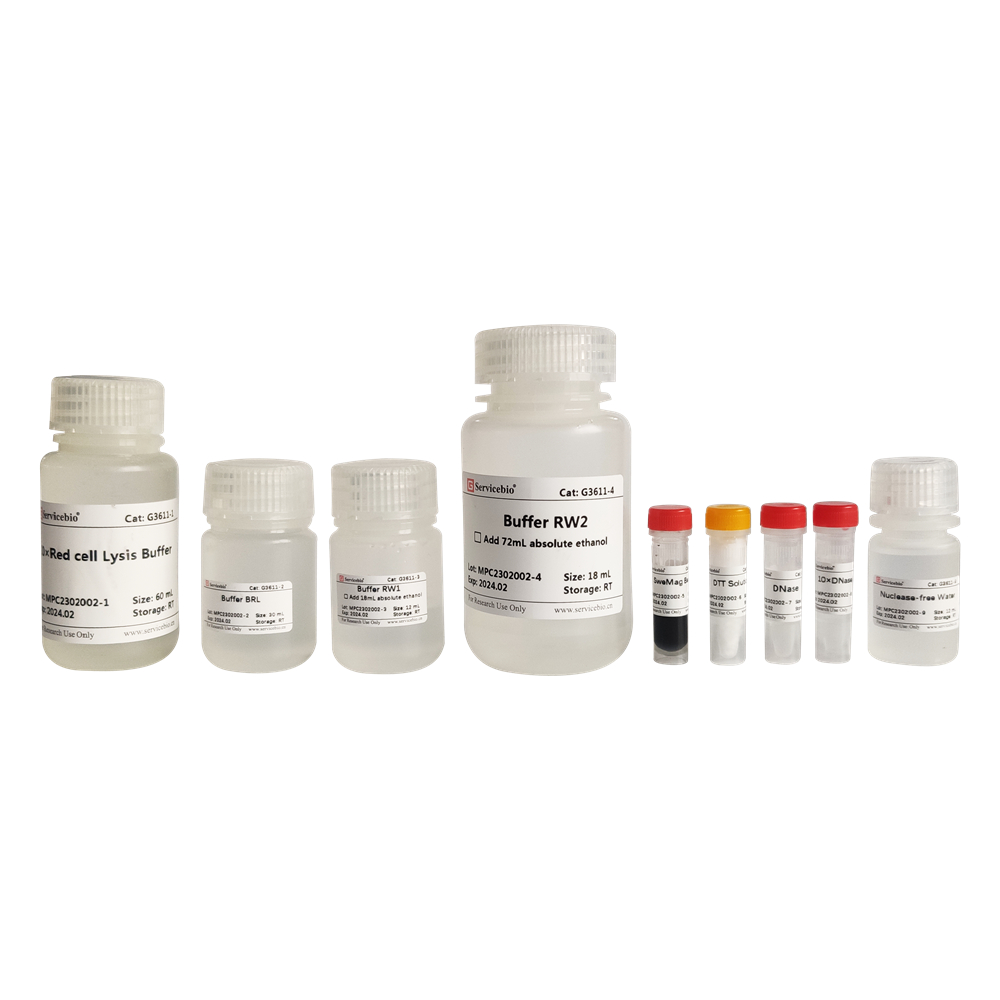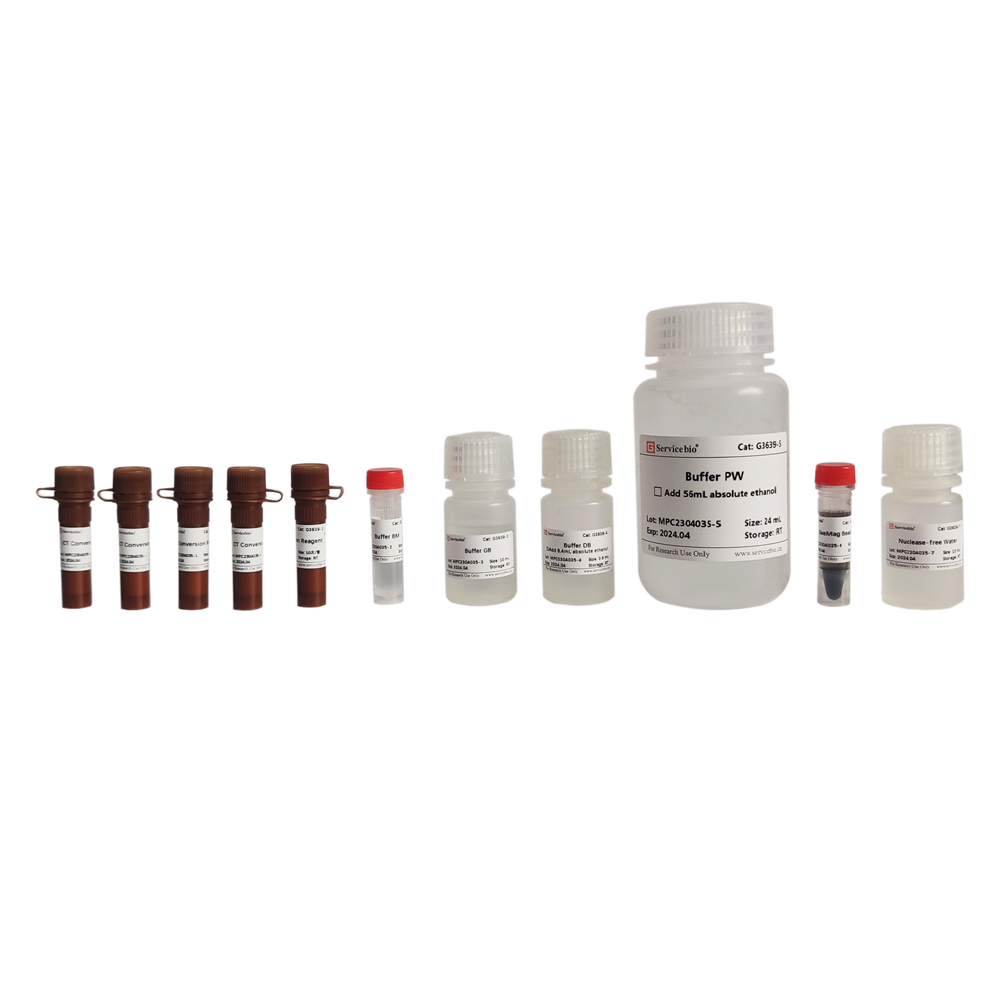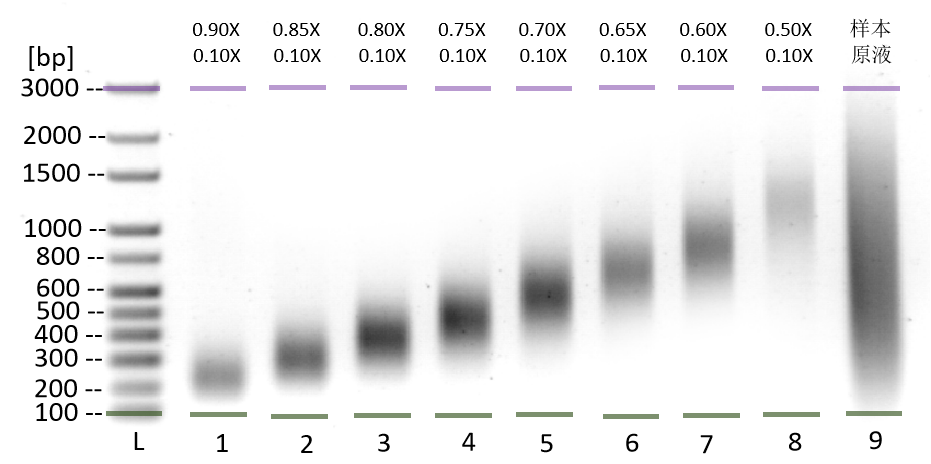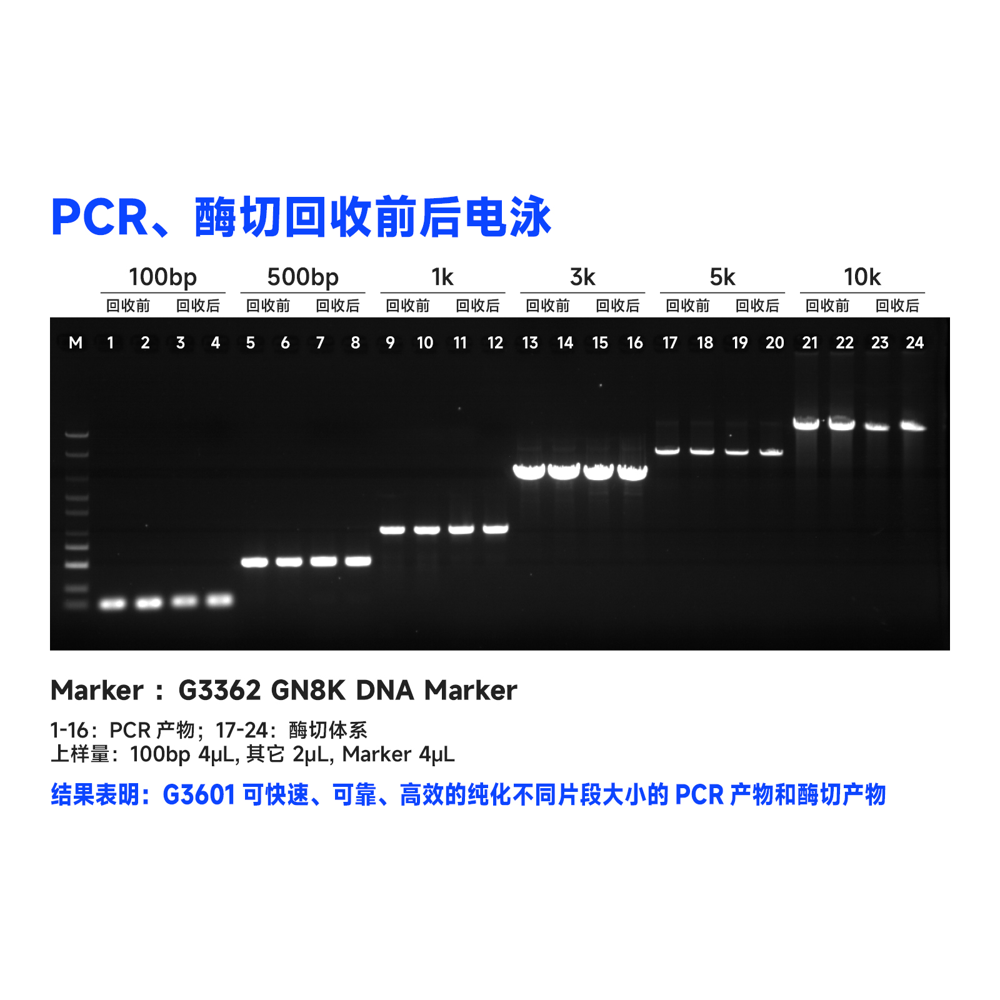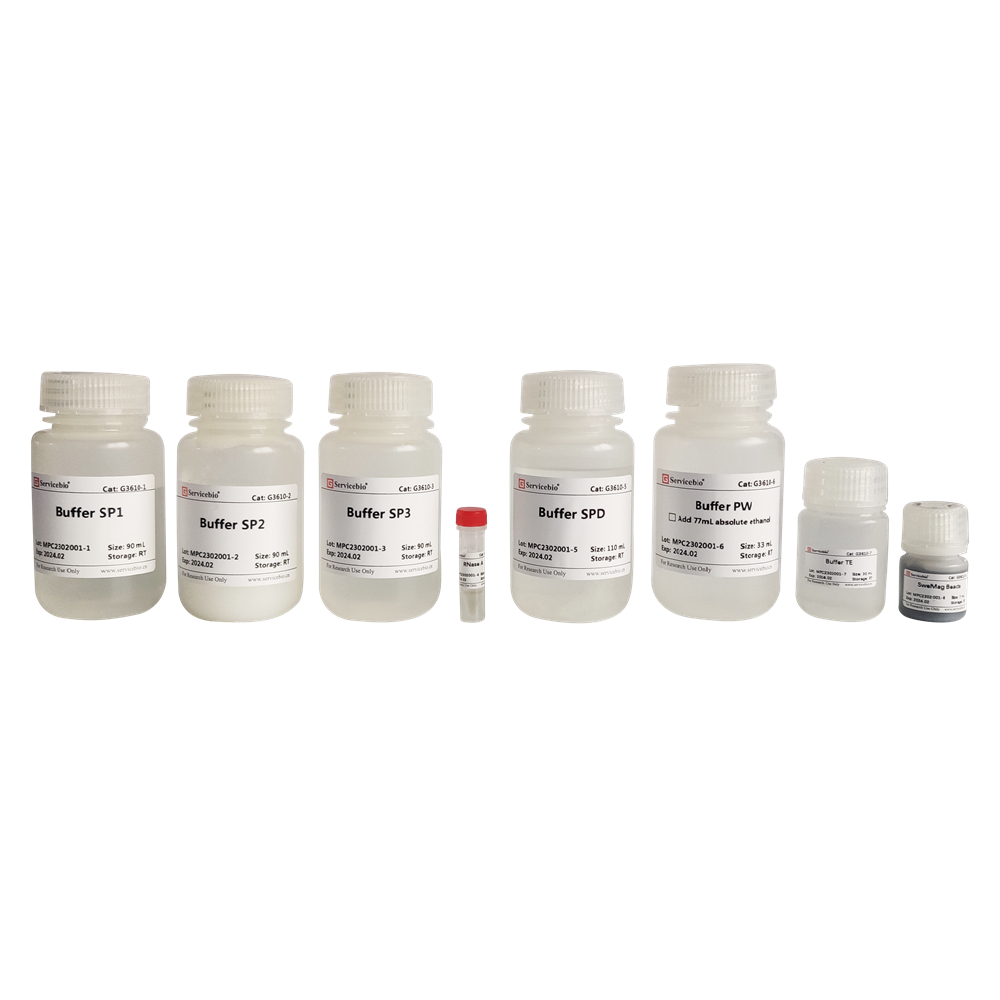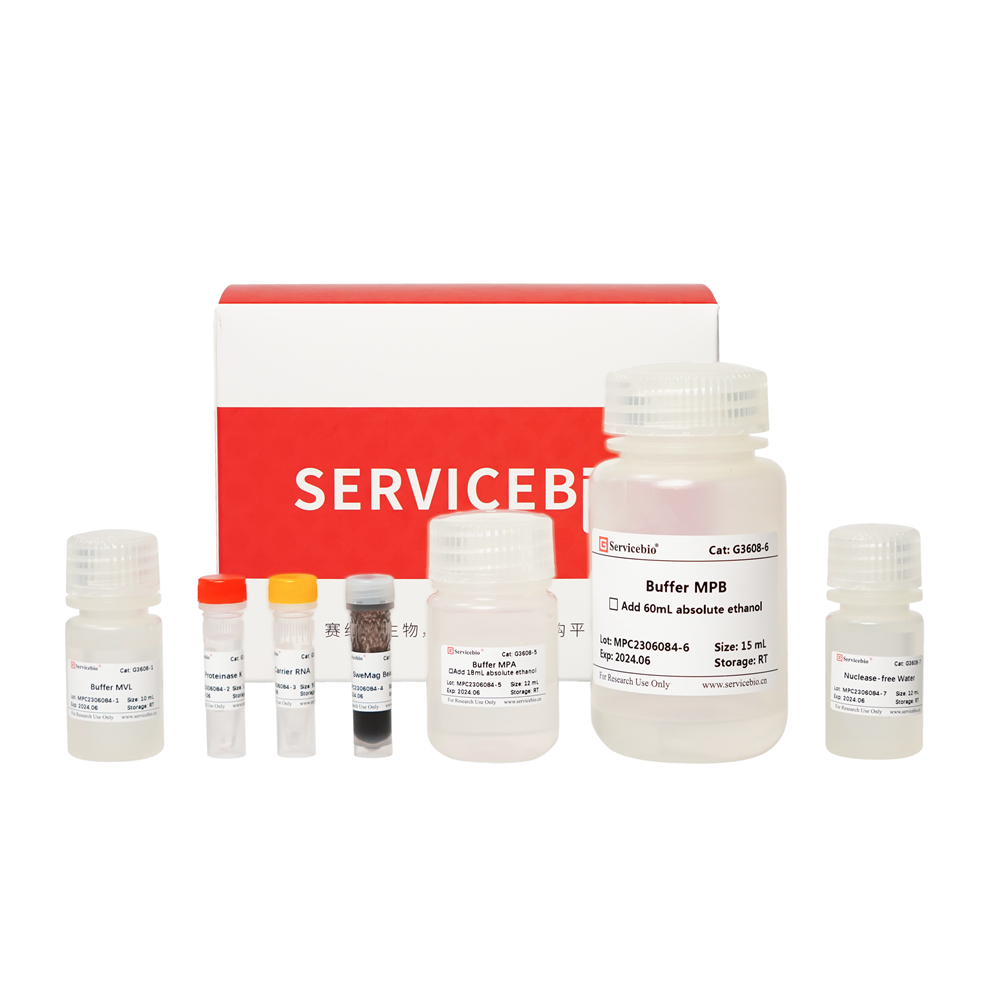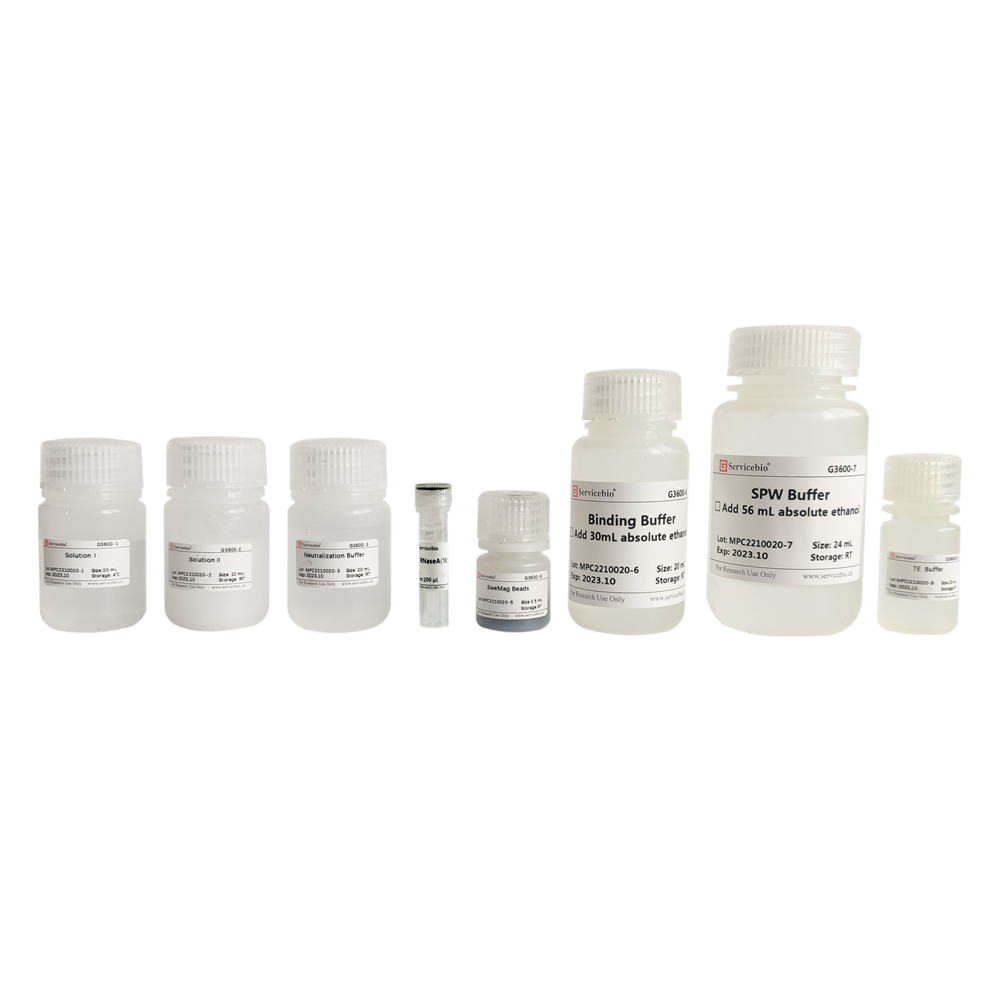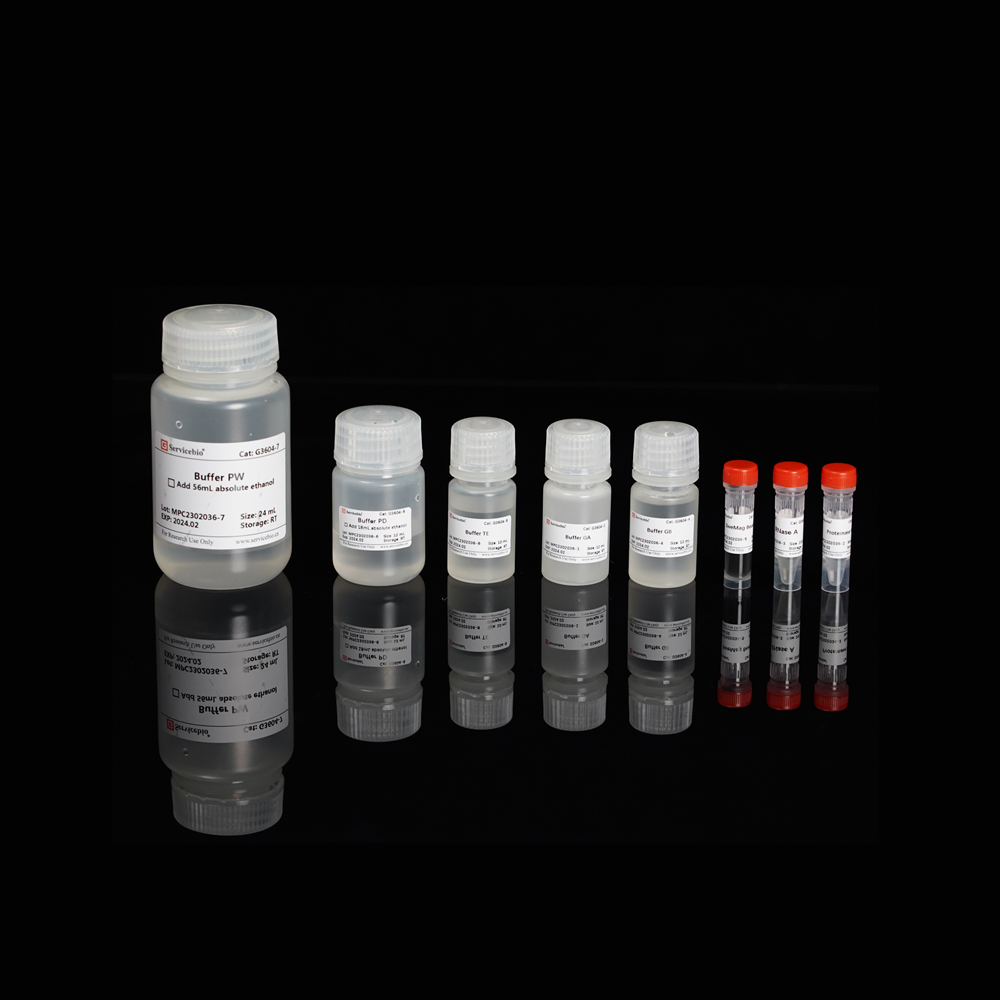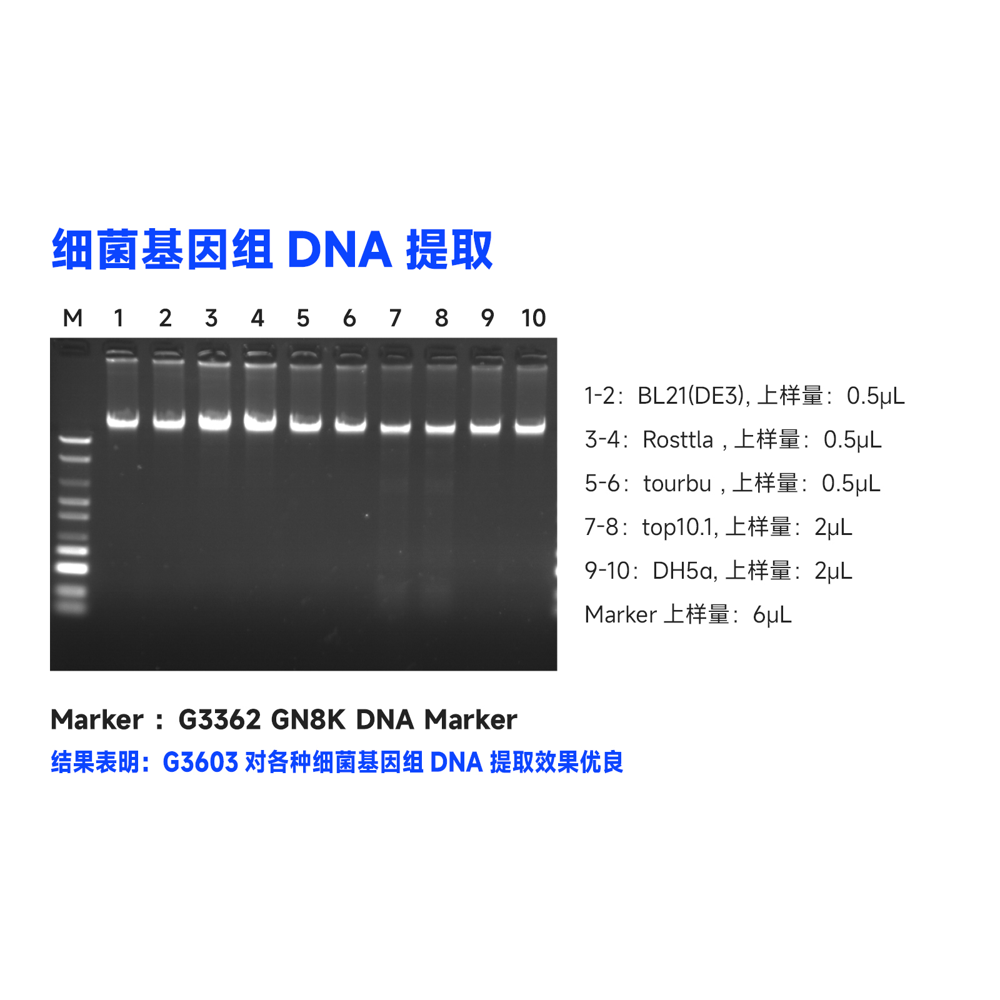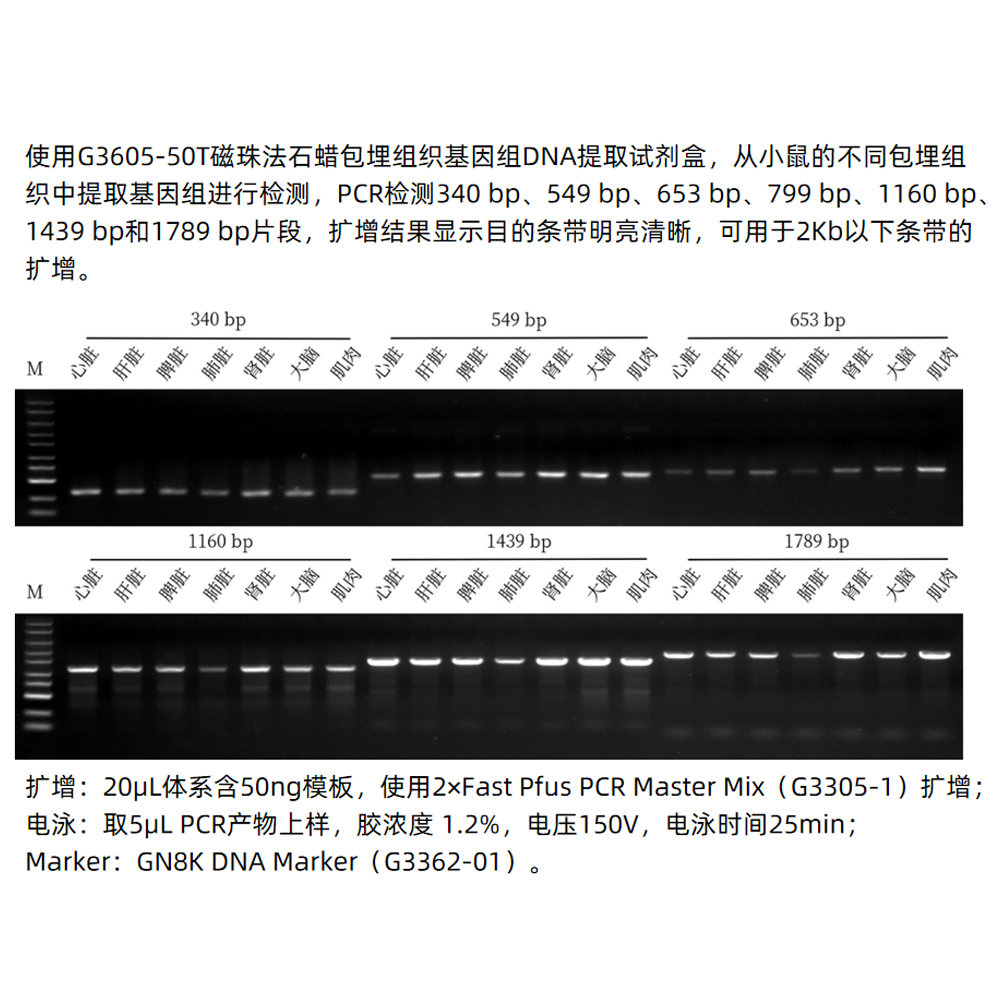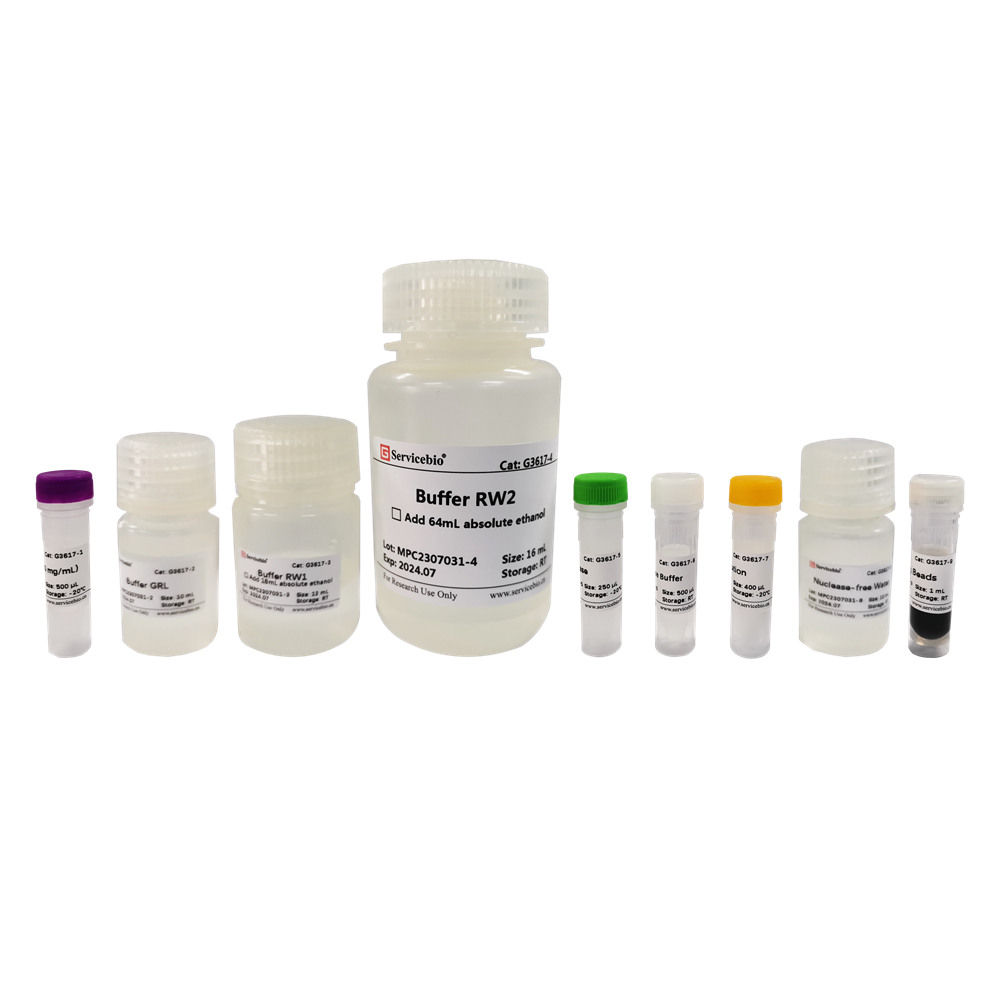Description
Product Information
- Product Name: Magnetic Bead-Based Blood Total RNA Extraction Kit
- Product Number: G3611-50T
- Specification: 50T
Product Description
This kit utilizes superparamagnetic beads specifically designed for nucleic acid extraction and purification to extract total RNA from fresh blood samples. The kit employs specially optimized lysis solution to lyse white blood cells after removing red blood cells, releasing nucleic acids, and then employs superparamagnetic beads with separation capabilities to adsorb RNA under certain conditions. By altering the conditions, the beads release the adsorbed RNA, resulting in high-purity RNA. This extraction method eliminates the need for reagents like phenol and chloroform and enables rapid extraction of high-purity RNA from less than 1.5 mL of whole blood. The extracted RNA can be directly used in various molecular biology experiments such as RT-PCR, RT-qPCR, Northern blotting, in vitro translation, RNase protection assays, and molecular cloning.
Storage and Transportation
- DNase, DTT Solution: Shipped on wet ice, store at -20°C.
- Other reagents: Shipped at room temperature, store at room temperature.
- Shelf life: 12 months.
the component list
| Component Number | Component | Volume |
|---|---|---|
| G3611-1 | 10× Red Cell Lysis Buffer | 60 mL |
| G3611-2 | Buffer BRL | 30 mL |
| G3611-3 | Buffer RW1 | 12 mL |
| G3611-4 | Buffer RW2 | 18 mL |
| G3611-5 | SweMag Beads | 1 mL |
| G3611-6 | DTT Solution | 1.2 mL |
| G3611-7 | DNase | 500 μL |
| G3611-8 | 10× DNase Buffer | 1 mL |
| G3611-9 | Nuclease-free Water | 12 mL |
| User Manual | 1 copy |
Preparation Before Use
- If Buffer BRL has precipitation, heat it at 37°C until dissolved, and use it at room temperature.
- Before use, add DTT Solution to Buffer BRL to a final concentration of 4%, i.e., for every 1 mL of Buffer BRL, add 40 µL of DTT Solution. This lysis solution is best prepared fresh, and the Buffer BRL with DTT Solution can be stored at 4°C for up to one month.
- Before use, add 18 mL of ethanol to Buffer RW1 and 72 mL of ethanol to Buffer RW2.
- Prepare a magnetic rack.
Experimental Procedure
- Dilute 10× Red Cell Lysis Buffer to 1× using Nuclease-free Water (e.g., if the blood sample volume is 200 µL, mix 140 µL of 10× Red Cell Lysis Buffer with Nuclease-free Water).
- Add 1 volume of blood sample to 5 volumes of 1× Red Cell Lysis Buffer and mix well. For example, if the blood sample volume is 200 µL, add 1 mL of 1× Red Cell Lysis Buffer.
- Incubate on ice for 15 minutes, inverting the tube 2-3 times. When the solution becomes semi-transparent, the red blood cells are completely lysed. Depending on the extent of blood sample lysis, the incubation time can be extended to 20 minutes.
- Centrifuge at 3,000 rpm, 4°C for 10 minutes, and completely remove the supernatant. Do not aspirate the white cell pellet.
- Add 2 times the volume of the blood sample of 1× Red Cell Lysis Buffer to the white cell pellet (e.g., if the blood sample volume is 200 µL, add 400 µL of 1× Red Cell Lysis Buffer) and resuspend the white cell pellet.
- Centrifuge at 3,000 rpm, 4°C for 10 minutes, and completely remove the supernatant, avoiding aspiration of the white cell pellet.
- Add Buffer BRL to the white cell pellet based on the blood sample volume (ensure that DTT Solution has been added). For blood sample volumes less than 0.5 mL, add 400 µL of Buffer BRL; for blood sample volumes of 0.5-1.5 mL, add 600 µL of Buffer BRL.
- Add 2/3 of the volume of isopropanol to the tube, invert several times, and then add 20 μL of SweMag Beads (previously vortexed for even dispersion). Pipette up and down to ensure uniform dispersion of the magnetic beads.
- Incubate at room temperature for 10 minutes, gently mixing 3-5 times with a pipette or vortex mixer during this period.
- Place the tube on the magnetic rack for 30 seconds until the beads are completely adsorbed. Then, gently invert the tube with the magnetic rack several times to wash off any remaining beads on the tube walls. After the supernatant is clear, discard it.
- Add 500 μL of Buffer RW1, remove from the magnetic rack, pipette to ensure even dispersion of the beads, return the tube to the magnetic rack for 30 seconds, and gently invert the tube with the magnetic rack several times to wash off any remaining beads on the tube walls. After the supernatant is clear, discard it.
- Add 500 μL of Buffer RW2, remove from the magnetic rack, pipette to ensure even dispersion of the beads, return the tube to the magnetic rack for 30 seconds, and gently invert the tube with the magnetic rack several times to wash off any remaining beads on the tube walls. After the supernatant is clear, discard it.
- Remove the magnetic rack and proceed with DNase digestion:
a) Prepare DNase reaction solution: Take 10 μL of 10× DNase Buffer, 10 μL of DNase, and 80 μL of Nuclease-free Water, mix them in a Nuclease-free centrifuge tube.
b) Add 100 μL of DNase reaction solution to the tube containing the magnetic beads, pipette gently to ensure even dispersion of the beads, and incubate at room temperature for 15 minutes. During incubation, pipette gently every 5 minutes.
c) After digestion, add 600 μL of Buffer RW2, pipette to ensure even dispersion of the beads, return the tube to the magnetic rack for 30 seconds, and gently invert the tube with the magnetic rack several times to wash off any remaining beads on the tube walls. After the supernatant is clear, discard it.
- Repeat step 12.
- Leave the tube open at room temperature for 5-10 minutes to allow ethanol to completely evaporate (avoid over-drying


